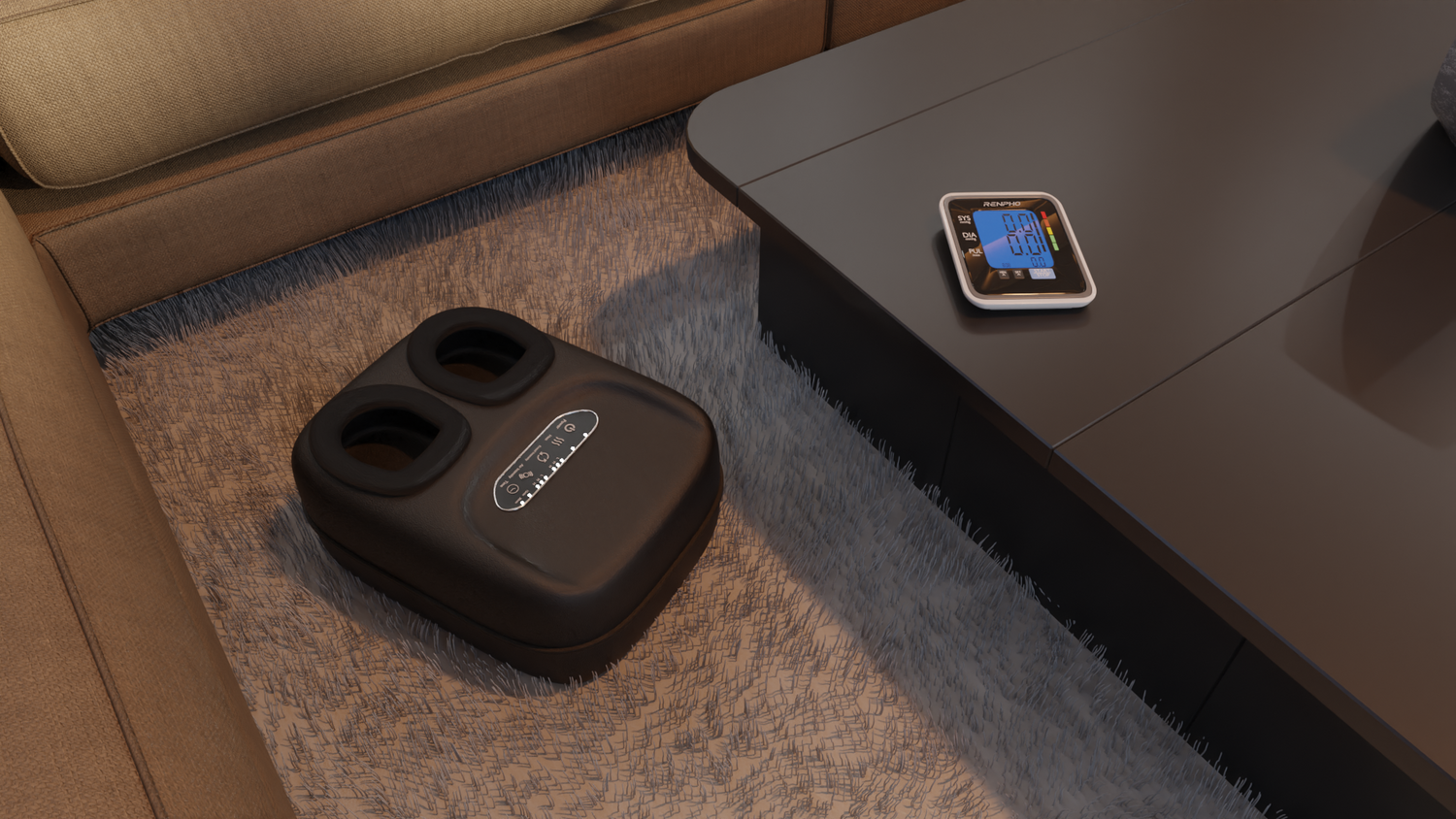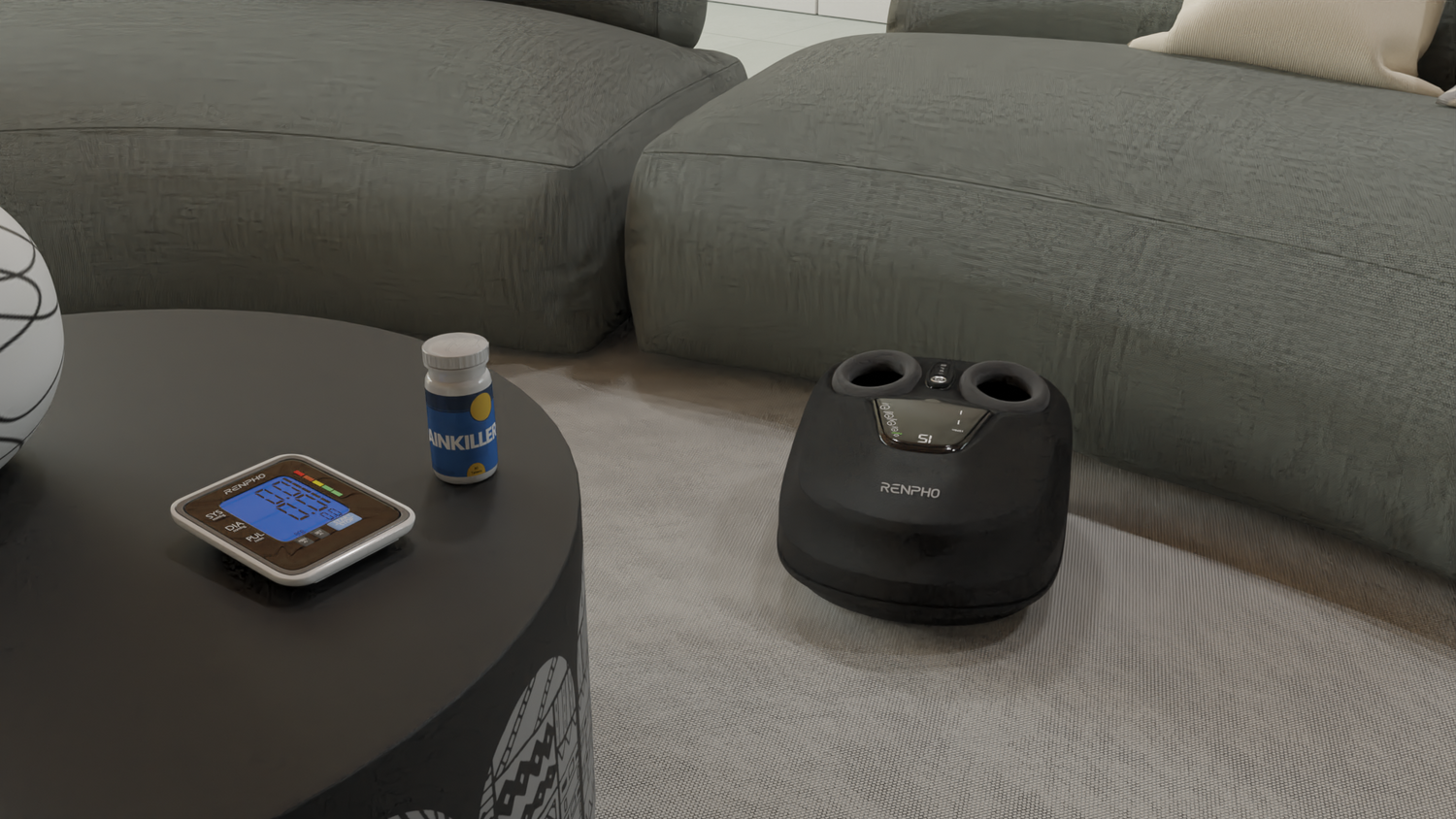Although foot reflexology is widely recognized as a form of alternative therapy that provides numerous health benefits, it is important to acknowledge that not all experiences are entirely pain-free. The discomfort that may arise during foot reflexology sessions is a subject that often remains unaddressed.
Let’s take a closer look at the reasons behind the discomfort that some individuals may encounter during their reflexology sessions. Hopefully, you’ll have a better understanding of the potential factors contributing to the discomfort and offer insights into how to address and alleviate it. Let's embark on this informative journey together and gain a deeper understanding of this aspect of foot reflexology.
What Is Foot Reflexology?

Essentially, foot reflexology is a form of massage therapy that involves using specific hand, thumb, and finger techniques to apply pressure to particular points on the feet. According to practitioners, these areas, known as "reflex points," correspond to different organs and systems in the body. By stimulating these points, the therapy aims to promote healing, reduce pain, and reduce stress levels throughout the body.
How Does Foot Reflexology Work?
The origins of foot reflexology can be traced to ancient China, where it was believed that applying pressure to specific points on the feet corresponded to various organs and other body systems, which could enhance the body's natural healing abilities.
This practice is based on the belief that energy flows through the body along specific pathways called meridians. By applying pressure to the reflex points on the feet, it is believed that the flow of energy can be balanced, promoting overall well-being and relieving ailments.
What Are the Benefits of Foot Reflexology?
Foot reflexology, when used as a form of complementary therapy, offers a wide range of benefits that contribute to overall well-being. Firstly, it promotes relaxation and reduces stress by targeting specific reflex points on the feet, helping to release tension and induce a sense of calmness.
Additionally, reflexology improves circulation throughout the body, enhancing blood flow and delivering oxygen and nutrients to cells more effectively, which aids in healing and revitalization.
The practice is also known for its pain-relieving effects, easing headaches, migraines, back pain, and joint discomfort by activating the body's natural pain-relieving mechanisms and reducing inflammation.
Furthermore, foot reflexology enhances nerve function by stimulating the nerve endings on the feet, thereby improving overall nerve communication.
It also supports detoxification by activating the lymphatic system, assisting in the elimination of toxins and promoting the removal of waste and impurities from the body.
Many individuals find that reflexology improves their sleep patterns, facilitating deeper and more restful sleep.
Moreover, it boosts energy levels and vitality by unblocking energy pathways and restoring balance within the body, combating fatigue and fostering a greater sense of vitality.
Lastly, regular foot reflexology sessions contribute to improved overall health and well-being by addressing imbalances and supporting the body's natural healing abilities.
However, it's important to consult with a qualified reflexologist or healthcare professional if you have specific health concerns or medical conditions before undergoing foot reflexology treatments, as it may not be suitable for everyone.
What Should You Expect During Foot Reflexology Sessions?
When you schedule a foot reflexology session, it’s natural to wonder what the experience will entail. Here’s a breakdown of what you can typically expect:
-
Consultation: Your reflexologist may start with a brief consultation to discuss your health history, concerns, and any specific goals you might have for the session.
-
Relaxed Environment: The session usually takes place in a calming setting, with dim lighting, peaceful music, and comfortable seating or a massage table.
-
Foot Examination: The reflexologist will examine your feet for any visible concerns and clean them as needed to ensure a hygienic session.
-
Pressure Techniques: Reflexologists use their hands, applying specific thumb and finger techniques to manipulate reflex points on your feet. The pressure should be firm but not painful.
-
Communication: You’re encouraged to communicate how the pressure feels. It should be adjusted to your comfort level, especially if you experience any discomfort.
-
Sensation Areas: Some areas might feel tender due to blockages in energy pathways, but the reflexologist will gently work through these to release tension.
-
Duration: Sessions typically last between 30 to 60 minutes, giving adequate time to address multiple reflex points.
-
Post-Session Feedback: Reflexologists often provide feedback on what they observed in terms of tension or energy blockages and may offer suggestions for follow-up care or sessions.
-
Hydration: You’ll be encouraged to drink water after the session to help flush out toxins and rehydrate your body.
By understanding what to expect, you can ensure a more comfortable and beneficial session tailored to your needs. Always feel free to ask questions before, during, or after your reflexology treatment.
Is Foot Reflexology Safe?

Foot reflexology is generally considered safe, but there are some important safety considerations and precautions to keep in mind. It should not be used if you have open wounds, fractures, or skin infections on the feet, as it may potentially worsen these conditions. Individuals with neuropathy, diabetes, or decreased sensation in their feet should also exercise caution, as they may not be able to properly perceive discomfort or pain during the reflexology session. Pregnant women should consult their healthcare provider before starting foot reflexology, as certain pressure points on the feet are believed to potentially induce labor.
Before starting foot reflexology sessions, especially for individuals with specific health issues, it is crucial to discuss the practice with a healthcare provider. People with conditions such as cardiovascular disease, kidney problems, or a history of blood clots should seek medical advice to ensure that foot reflexology is safe for them.
Overall, while foot reflexology can be a relaxing and beneficial practice for many, it is important to be aware of potential risks and seek guidance from a healthcare provider when necessary.
Why Does Foot Reflexology Hurt?

Foot reflexology is generally a relaxing and therapeutic practice, yet it's not uncommon for some individuals to experience discomfort during a session. There are several reasons why it might cause pain or discomfort:
-
Sensitive Reflex Points: Each person's body is unique, and the sensitivity of reflex points on the feet can vary. Some points may be more sensitive or tender in certain individuals, leading to discomfort when pressure is applied.
-
Blockages and Imbalances: In cases where there are blockages or imbalances in the corresponding organs or systems, applying pressure to the reflex points may trigger discomfort as the body's energy pathways are stimulated.
-
Existing Health Conditions: Individuals with certain health conditions, such as plantar fasciitis, bunions, or foot injuries, may experience increased sensitivity or pain during reflexology.
-
Stress and Tension: Stress and tension can manifest in the feet, causing sensitivity and discomfort during a reflexology session. This sensitivity may be temporary and subside as the session progresses and the body relaxes.
-
Deep Tissue Work: Some reflexologists may apply deeper pressure during a session to target specific reflex points or address certain conditions. While this deeper pressure can be beneficial, it may also cause temporary discomfort or sensitivity.
It's important to communicate with your reflexologist during the session. They can adjust the pressure or technique to ensure your comfort. It's also advisable to choose a qualified and experienced reflexologist who can adapt the treatment to your specific needs.
If the pain persists or is severe, it's recommended to consult with a healthcare professional to rule out any underlying issues.
How to Avoid Feeling Pain During a Foot Reflexology Session?
To minimize or avoid feeling pain during a foot reflexology session, consider the following steps:
-
Communicate with your reflexologist: Before the session begins, discuss any concerns or sensitivities you have. Inform them about any areas of discomfort or pain you're experiencing. This will allow the reflexologist to adjust their techniques and pressure accordingly.
-
Choose a skilled and experienced reflexologist: Look for practitioners who have proper certifications and training. They will have a better understanding of how to apply appropriate pressure and techniques to minimize discomfort.
-
Relax your body and mind: Practice relaxation techniques before and during the session. Deep breathing, visualization, or focusing on positive thoughts can help calm your mind and relax your body. Being in a relaxed state can reduce sensitivity to pain.
-
Start with gentle pressure: To ease into the session, ask your reflexologist to begin with lighter pressure. As your body adjusts and becomes more comfortable, they can gradually increase the pressure if desired.
-
Provide feedback during the session: Don't hesitate to provide feedback to your reflexologist throughout the session. If you experience any pain or discomfort, let them know immediately. They can then adjust their techniques or pressure accordingly to ensure your comfort.
-
Hydrate before the session: Proper hydration can help make your tissues more pliable and less sensitive to pressure. Drink an adequate amount of water before your reflexology session to keep your body hydrated.
-
Take breaks if needed: If you feel excessive discomfort during the session, ask your reflexologist for short breaks. This can help alleviate any pain or sensitivity and allow your body to readjust.
Remember that some level of sensitivity or discomfort may be normal during a reflexology session, especially when targeting specific reflex points or addressing imbalances. However, it should not be overly painful.
When You Should Avoid Foot Reflexology?
While foot reflexology can be a beneficial therapy for many, there are certain circumstances where it might be advisable to avoid it. Here are some situations where refraining from foot reflexology is recommended:
-
Recent Injuries: If you have a recent foot, ankle, or leg injury, such as fractures, sprains, or strains, it’s best to avoid reflexology until you have fully healed.
-
Severe Osteoporosis: Individuals with severe osteoporosis should consult with a healthcare professional prior to undergoing reflexology, as the pressure could potentially harm fragile bones.
-
Circulatory Problems or Blood Clots: Those with issues like deep vein thrombosis or blood clots should avoid reflexology, as manipulating the feet might worsen their condition.
-
Active Infections or Open Wounds: If you have an active infection or open wounds on your feet, reflexology should be postponed until they have healed to prevent discomfort or further complications.
-
Pregnancy: Certain reflex points are believed to stimulate labor. Pregnant individuals should seek guidance from a healthcare provider, especially during the first trimester.
-
Severe Foot Conditions: Conditions like severe athlete’s foot, gout, or plantar fasciitis can be aggravated by the pressure applied during reflexology. Consulting a medical professional is recommended before proceeding.
-
Uncontrolled Diabetes: Those with poorly managed diabetes might have nerve damage or circulatory issues, making reflexology potentially risky. It's important to seek medical advice.
Before starting foot reflexology, it’s always wise to consult with a healthcare provider, especially if you have any existing health concerns or conditions. This ensures that the therapy is safe and suitable for your personal health needs.
Takeaway: Understanding Foot Reflexology Discomfort
While foot reflexology is widely recognized for its therapeutic benefits, it is important to acknowledge that not all experiences are entirely pain-free. The discomfort that may arise during sessions is a topic that often remains unaddressed. There are several reasons why foot reflexology might induce pain or discomfort, including sensitive reflex points, blockages and imbalances, existing health conditions, stress and tension, and deep tissue work.
To avoid or minimize pain during a foot reflexology session, it is important to communicate with your reflexologist and discuss any concerns or sensitivities you have. Choosing a skilled and experienced reflexologist who can tailor the treatment to your specific needs is also vital. Practicing relaxation techniques, starting with gentle pressure, providing feedback during the session, hydrating before the session, and taking breaks if needed, can all help alleviate discomfort.
Moreover, it's important to remember that while some level of sensitivity or discomfort may be normal during a reflexology session, it should not be overly painful. If the pain persists or is severe, it's recommended to consult with a healthcare professional to rule out any underlying issues.
Overall, foot reflexology can be a relaxing and beneficial practice, but it's important to be aware of potential risks and seek guidance from a healthcare provider when necessary.
If you’re looking for a relaxing way to relieve stress or tension in your feet, look no further than our collection of foot massagers!
Sources:
RENPHO Health Tips
-

A Surprising but Welcome Link: Can Foot Massage Lower Blood Pressure?
February 1, 2024
Read more >
-

The Pomodoro Technique: Maximizing Focus and Efficiency in Work and Fitness
January 30, 2024
Read more >
-

Foot Massage 101: Can It Help with Migraines?
January 30, 2024
Read more >
-

Can Foot Spas Provide the Solution to Your Foot Odor Dilemma?
January 23, 2024
Read more >
-

Unlocking Relaxation: Exploring Foot Reflexology Techniques for Stress Relief
January 17, 2024
Read more >



































